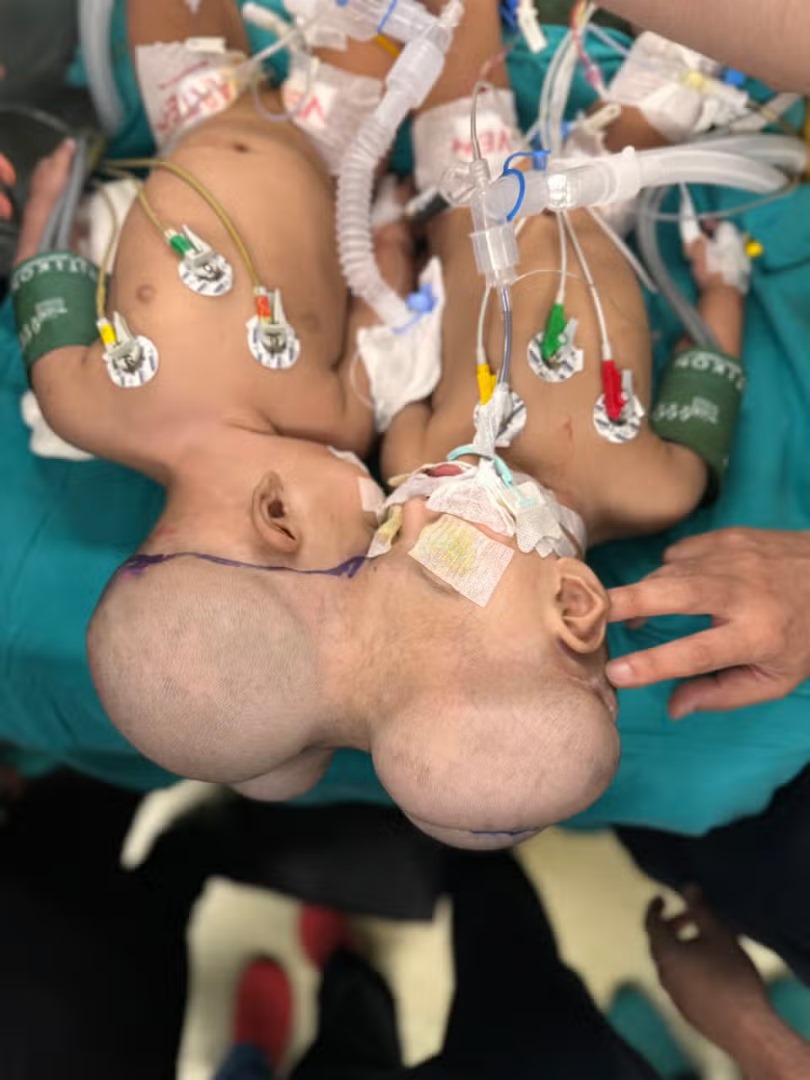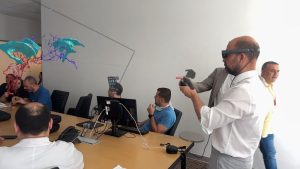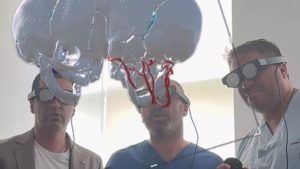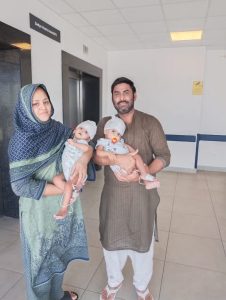
One-year-old twin girls, conjoined at the head, have been successfully separated during a 14-hour operation led by a leading British surgeon.
Professor Noor ul Owase Jeelani, from Great Ormond Street Hospital, used leading mixed reality technology to complete the complex procedure on Minal and Mirha in Turkey.
The girls, who were born in Pakistan, are called craniopagus twins because they are joined at the head.
They shared vital blood vessels and brain tissue, and the separation of the pair required extremely intricate surgery.
Professor Noor ul Owase Jeelani, completed the intricate procedure in Turkey, He said, “It was so rewarding to see two healthy children and the joy on their parents’ faces,” Jeelani told the Evening Standard, adding, “a really wonderful feeling.”
The complex surgery carried out at Ankara Bilkent City Hospital, spanned over three months and involved advanced techniques, including mixed reality (MR) technology, to separate the twins’ shared brain tissue and blood vessels.


Mixed Reality (MR) technology combines 3D images with the physical world and is used to increase precision during complex operations. It enhances a surgeon’s view of a patient by mixing digital content – like 3D scans – while remaining in the real world.
A high-definition 3D model of the twins was created to help train medics in Ankara on what to expect in the operating theatre, as well as allowing the UK-based team to prepare and rehearse the surgery.
“We used special goggles to view images of the brain and blood vessels superimposed onto the child’s head during surgery,” Jeelani explained, crediting the technology for its precision and potential to revolutionise surgical planning.
The case was referred to Jeelani’s team in 2023, and with support from Gemini Untwined and the Turkish government, the twins were transported from Pakistan for the life-saving operation.
Reflecting on the achievement, Jeelani praised the collaboration, saying, “Against the odds, we managed to pull it off
He has led several surgeries involving conjoined twins including three-year-old boys in Brazil in 2022, one-year-old twin girls in Israel in 2021, and in 2019 twin two-year-old girls from Pakistan.
According to Gemini figures, one in 60,000 births results in conjoined twins, and only 5% of these are craniopagus children.
The life expectancy of twins who are not separated is very low. About 40% of twins fused at the head are stillborn or die during labour.

Minal and Mirha were born with a rare prenatal condition, leading to their conjoined state, sharing critical blood vessels. “They’re making an excellent recovery, really wonderful,” Jeelani told Sky News.







